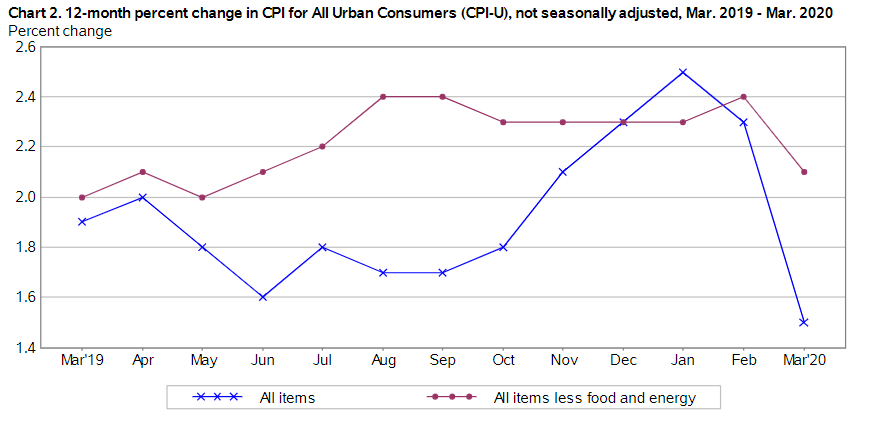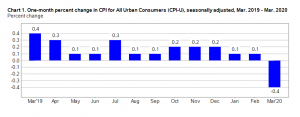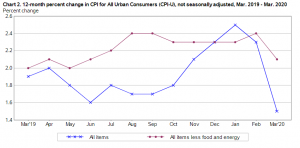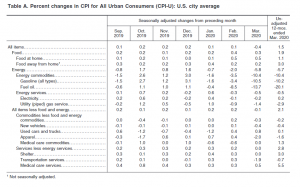The Consumer Price Index for All Urban Consumers (CPI-U) dropped 0.4% in March according to a new summary report by the U.S. Bureau of Labor Statistics. The 0.4% drop in consumer prices is reported on a seasonally-adjusted basis, and represents the largest single-month decline since January 2015. From March 2019 to March 2020, the CPI-U increased 1.5% before adjustment and consumer prices rose 0.1% in both February and January.
The drop in U.S. consumer prices in March is led by two principal factors. First, the price of oil reaching 18-year lows due to reduced industrial and consumer demand in tandem with the ongoing Saudi-Russian oil price war. Second, a generally strained U.S. economy due to the Covid-19 pandemic.
Food Index
Despite a large overall drop in the CPI-U, the food index rose by 0.3% in March. This price movement represents a minor cool-down from February’s 0.4% increase in the food index. The Food at home index shot up 0.5%, which matches its growth in February.
In March, all six grocery store food group indexes increased during the month of March. Consumer prices for non-alcoholic beverages increased by 0.9% and the fruits and vegetables index rose 0.8% following a stagnant month in February.
The food away from home index rose a more modest 0.2% in March, which matches its February increase. The Labor Department reported that the index for food away from home rose 3.0% over the past year, and the food at home index rose by 1.1%.
All Items Less Food and Energy Index
In March, the index for all items less food and energy fell by 0.1%. The indexes for rent and owners’ equivalent rent edged up by a modest 0.3%, although these increases were offset by a 6.8% fall in the index for lodging away from home.
Although the airline fares index fell by only 0.3% in February, March saw a much more pronounced decline of 12.6%. After four consequent months of increases, the apparel index fell by 2.0% in March and the index for new consumer vehicles fell by 0.4% in March despite increasing through February.
The medical care index rose 0.4% in March amid the developing novel coronavirus pandemic. The physicians’ services index rose 0.3% while the hospital services index rose by 0.4% in March. The prescription drug index fell by 0.2%. In the past 12-month period, the index for all items less food and energy rose by 2.1%.
Energy Index
Notably, the U.S. energy index fell by 5.8% in March, marking its largest drop in over five years. The monthly decrease was led by a sharp drop in gasoline prices, as the gasoline index declined by 10.5% after seasonal adjustment.
Other energy index items also fell in March, including the fuel oil index (-13.7%), the natural gas index (-1.4%), and the electricity index (-0.2%). In the past year, the U.S. energy index dropped by 5.7%, which the Labor Department reports to be the largest 12-month decline since the year ending August 2016.
Source cited: https://www.bls.gov/news.release/archives/cpi_04102020.htm






